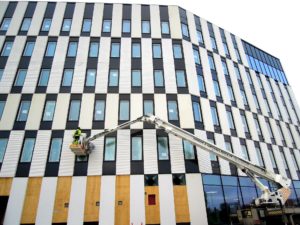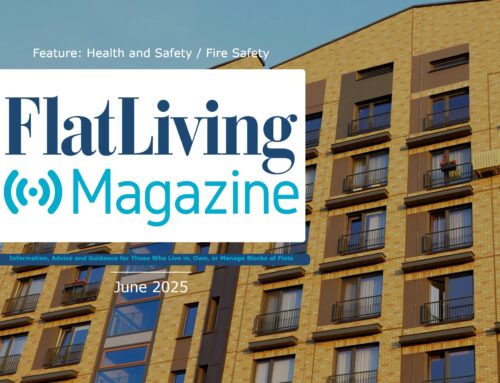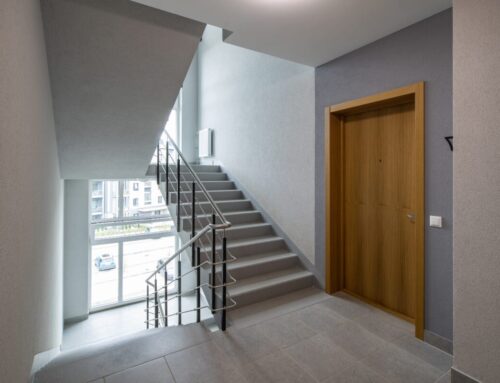Belinda Thorpe, Managing Director of Residentsline, discusses the cladding issues affecting the property industry today.
Following the tragic events of the Grenfell Tower fire in June 2017, there has been a nationwide reassessment of insufficient fire safety in blocks of flats. As many of you are already aware, the tragedy that befell Grenfell Tower was primarily blamed on the cladding, as the polyethylene-cored panels used in the construction of the Tower did not comply with fire safety regulations. This has been labelled as the main reason the fire was able to spread at such a devastatingly rapid rate.
In an effort to prevent further tragedies from occurring, the last three years have brought widespread scrutiny of the fire safety performance of building materials used for blocks of flats.
On 21st December 2018, new amendments to the Building Regulations came into force, banning combustible materials from being used in new builds. The much-needed amendments which address the fire safety across existing properties, however, are proving to be highly problematic.
Purpose and process behind the EWS review:
In December 2019, as a collaborative effort between UK Finance, the Building Societies Association (BSA) and the Royal Institution of Chartered Surveyors (RICS), the External Wall Systems fire review and subsequent form (EWS1) was introduced.
This process has been introduced as a way for property owners to confirm that the external walls of their building are fire-safety approved and, once confirmed, is valid for five years.
- Review: The building will undergo a fire safety assessment carried out by a trained expert.
- EWS1 form: Following this assessment, the qualified professional will then sign the ESW1 form to confirm the building is fire-safety approved.
According to RICS, the EWS review process has been developed through “extensive consultation with a wide range of stakeholders including fire engineers, lenders, valuers, and other cross industry representatives.”
It is undoubtedly necessary to have these kinds of regulations in place, as improper fire safety can – and already has – put many lives at risk. Whilst the tragedy of Grenfell Tower has highlighted severe issues with cladding, this is not the only thing the EWS assessment will look for. As pointed out by Ringley Group, all materials used in the construction of buildings will be reviewed for their fire safety: “No professional will sign an EWS1 form without knowing the combustibility of the insulation behind the cladding or even the combustibility of the glue and/or fixing compounds.”
What type of building requires an EWS review?
The EWS reviews were initially intended for residential buildings which stand over 18 meters, although RICS states that: “Not every building above 18m will require an EWS1 form – only those with some form of combustible material making them unsafe, or, for example, combustible material on balconies.”
However, based on documents released by the Independent Expert Advisory Panel, the government issued advice in January 2020 which specifies that the EWS should also be applied to buildings which have “specific concerns”. This now includes buildings below 18m, for example, buildings with 4-6 storeys which contain combustible cladding or any combustible materials on balconies, and therefore pose a risk to residents in the event of a fire.
According to RICS, the necessity of an EWS review may also apply to buildings with only 1-3 storeys if the “type of occupation of the building significantly increases risk to life in the event of a fire, e.g. a care home with elderly people which could not be evacuated quickly and which will necessitate remediation works that will materially affect value.”
What are the issues?
Upon its introduction, it was hoped the EWS process would help those wanting to buy, sell or remortgage flats or apartments by confirming the fire safety standards of their block. However, only one month in, outstanding or delayed EWS inspections for many buildings meant that mortgage lenders were rejecting applications. This has rendered countless borrowers unable to move away from their current buyers, effectively trapping many homeowners. There are many major issues which have been highlighted across the industry:
-
The process is too slow and difficult:
This has led to harsh delays in property purchases, as current owners are unable to sell and move forward.
-
The EWS inspections and remediation costs are incredibly expensive:
Even when no remediation work is necessary, EWS inspection costs are passed to residents through their annual service charges. Likewise, in a letter released last month, Mayor of London Sadiq Khan admitted that there is “insufficient government funding on offer to protect leaseholders from the financial burden of remediation costs if they are identified.”
-
Reluctant freeholders:
Some freeholders have been reported as being unwilling to have EWS inspections carried out due to the potential costs of modifications. According to Anthony Rose, Director at LDNfinance, this has led to “severely delayed and jeopardised purchases”.
-
There is a shortage of qualified experts:
There are simply not enough qualified experts able to carry out the vast number of requested EWS reviews. This issue is also being exacerbated by lenders requesting an EWS1 form more widely than was initially intended.

What solutions are in place?
With the current system is operation, the London Mayor expects it to take “years” for each building to be certified as safe. This is especially problematic as the EWS form is only valid for five years. Without immediate reforms, this will mean a vicious cycle of mortgage issues, plus a constant demand for qualified inspectors.
In his letter, the London Mayor identified the “devastating effects the EWS1 crisis is having” and proposed some solutions which will help to alleviate key issues.
-
Long-term funding of reparation costs:
The government must immediately source funding to cover the costs of remediation work for those buildings which fail the EWS review. This funding will be applied in cases where residents are unable to pay.
-
More clarity on the buildings which require an EWS1 form:
By providing more detail on the buildings which require an EWS1 form, the government hope to lessen unnecessary requests from lenders, as well as lessening the demand for qualified inspectors and reducing unnecessary EWS inspection costs for leaseholders.
-
Increasing the number of qualified inspectors:
Through developing a training and accreditation programme, the government hope to increase the number of qualified experts who can perform the EWS reviews, therefore reducing the demand on inspectors and speeding up the rate at which EWS1 forms are issued.
In all, the current crisis is unlikely to be resolved immediately, and unfortunately is only made more difficult to solve with the current recession and pandemic. However, the government response has both recognised and identified the severity of the situation; hopefully, we will be able to see some effective solutions come into play soon.
For more information, please call a member of the Residentsline team on 0800 281 235.




Leave A Comment